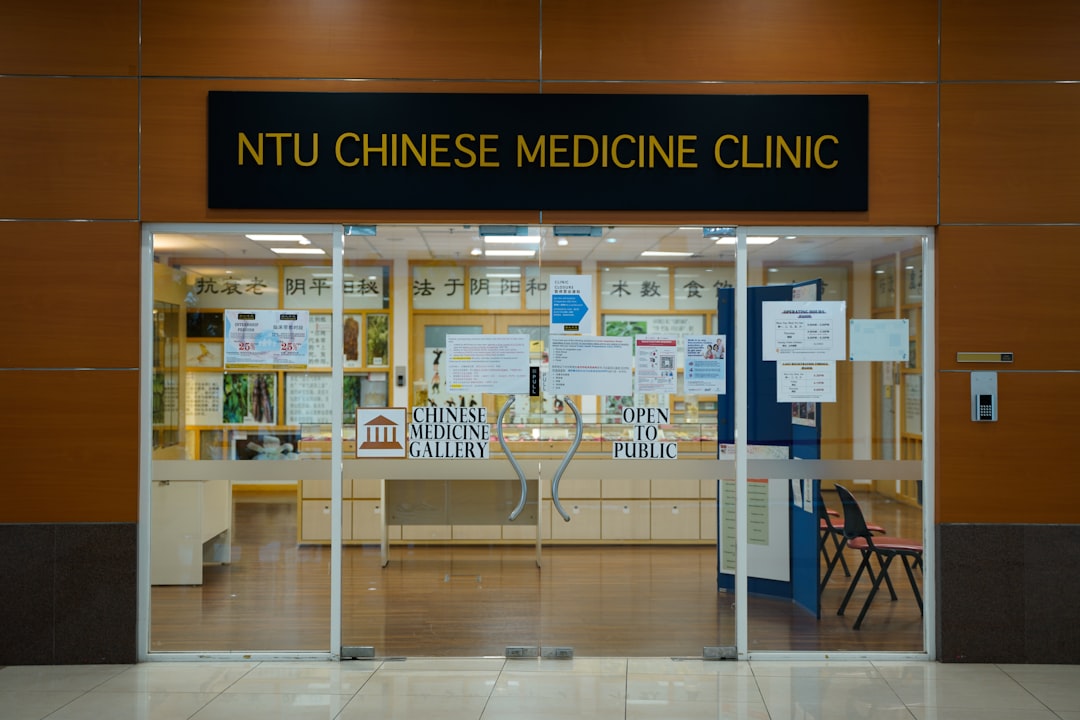

Engage prospects with a scan and streamline customer engagement with FREE QR code marketing tools by Sona – no strings attached!
Create a Free QR CodeFree consultation

No commitment

Engage prospects with a scan and streamline customer engagement with FREE QR code marketing tools by Sona – no strings attached!
Create a Free QR CodeFree consultation

No commitment
In today’s digitally driven world, clinics are rethinking how they capture, analyze, and act on patient feedback. QR codes have evolved from novelty to strategic infrastructure, as seen in medical marketing, turning physical touchpoints into instant digital pathways that deliver surveys, reviews, service recovery triggers, and education without the friction of app downloads or logins. For clinics that want to move fast and reduce manual work, QR codes offer a direct route from real-world interactions to measurable, actionable insights.
By placing QR codes at key moments in the patient journey, clinics can streamline feedback collection, identify issues early, and integrate insights directly into EHR and CRM systems. The result is a tighter feedback loop, higher response rates, and a better understanding of patient sentiment. With the right setup, QR codes can also segment audiences, fuel retargeting, and support continuous improvement across clinical operations and patient experience.
When paired with a platform like Sona QR, clinics gain dynamic control over destinations, robust analytics, and integrations that route the right feedback to the right team quickly. This enables precise action, faster resolution, and more personalized patient communication after every scan.

Clinics have long faced difficulties in capturing high-value feedback due to incomplete paper forms, slow manual processes, and uneven distribution of surveys at the end of visits. Patients often leave before staff can ask for feedback, paper forms are misplaced, and in-person impressions go undocumented. These gaps not only create missed engagement but increase frustration among both staff and patients who want faster, more modern ways to be heard.
QR codes eliminate friction by enabling quick, anonymous feedback through mobile-optimized forms that patients can complete in seconds. When placed at the front desk, in exam rooms, on discharge paperwork, or in post-visit communications, QR codes meet patients where they are and reduce the effort required to share an experience. This also helps staff by removing the burden of distributing and collecting paper surveys, which rarely produce reliable data at scale.
To eliminate feedback bottlenecks and gather timely insights, clinics can implement QR codes to drive patients to streamlined digital surveys like Google Forms QR. Effective execution includes:
For example, a clinic can replace printed surveys with a QR code that links to a mobile-first form that takes less than two minutes to complete. Responses can immediately alert the patient experience team to service issues, prompt personalized outreach for low ratings, and route clinical concerns to the care team for fast follow-up.
Clinics can further streamline this process by creating separate survey flows for new patients, returning patients, and telemedicine visitors. Each scan produces structured data tied to a journey stage, which supports personalized messaging and better triage of patient needs. Over time, this discipline helps clinics understand patterns and address root causes that impact satisfaction and retention. Start creating QR codes for free: Start creating QR codes for free

Connecting offline encounters to the clinic’s digital ecosystem remains challenging. Missed interactions, delays in data capture, and incomplete notes prevent teams from understanding true patient sentiment. Feedback that arrives days later is harder to act on, and anonymous insights rarely make it to the right team in time. QR codes bridge this gap in healthcare settings by enabling frictionless, measurable engagement at every contact point.
Patients expect convenience, privacy, and speed. QR codes reduce the need for app downloads or accounts and provide a low-pressure way to provide feedback. A clear call to action, combined with privacy assurances and a simple form, improves completion rates and surface-level sentiment. Clinics can then route data into the right systems and close the loop quickly.
For example, clinics relying on paper handouts typically see single-digit response rates. By placing QR codes at exit doors with a simple message like “Help us improve your care: Scan for a 1-minute survey,” clinics often capture feedback from patients who would otherwise remain silent. That data can be tied to visit types or physician schedules, giving leadership specific, actionable insight.

Using the right QR code strategy helps clinics capture actionable patient signals quickly. Static codes are suitable for evergreen materials that rarely change. Dynamic codes supply flexibility, real-time updates, and detailed tracking, which is ideal for feedback programs that evolve over time.
Clinics benefit most from formats that reduce typing and guide patients to high-utility destinations. Surveys, forms, vCards for providers, and app download links are particularly valuable when integrated with EHR or CRM systems. The goal is to minimize effort while maximizing data quality and continuity of care.
With Sona QR, clinics can generate all of these formats, manage them centrally, and switch destinations for dynamic codes without reprinting. Pairing the right code type with the right touchpoint increases conversion, simplifies the patient experience, and improves the fidelity of data collected.
Opportunities to capture feedback often hide in plain sight. Routine moments in the clinic create perfect conditions for a quick scan and short survey. By placing QR codes in predictable patient pathways, clinics can convert waiting time and transition moments into valuable insight with ideas from Sona QR’s use case library.
Focus on locations where patients have a minute to spare or just completed a meaningful interaction. Context matters. A QR code that prompts a one-minute feedback survey will perform best when adjacent to the relevant experience, such as the exam room, check-out, or telemedicine session end-screen.
QR data from these placements helps clinics map operational patterns, identify churn risks, and engage overlooked patients. Over time, you can correlate scan activity and scores with visit types, providers, and time of day to uncover process improvements and training needs.

Clinics can deploy QR codes across a range of workflows to capture feedback and streamline operations. Focus on high-frequency interactions that impact satisfaction and retention. A small number of well-designed codes can drive measurable outcomes immediately.
Combining a clear call to action with a fast-loading, mobile-optimized destination is crucial. Keep surveys short, save longer forms for specific use cases, and ensure accessibility for older adults or those with visual impairments. Use dynamic codes to test new destinations without reprinting.
Clinics often struggle to distinguish who is engaging online versus offline and why. QR code scans help identify intent by context. A scan in the waiting room differs from a scan on a direct mailer, and a telemedicine scan carries different signals than a front-desk scan. By tagging codes and destinations carefully, clinics can build audience segments that inform follow-up and personalization.
Segmenting by journey stage and use case ensures patients receive relevant outreach. New patients who scan a “welcome” code might receive onboarding emails, while existing patients who scan after a flu shot could be offered reminders for the next dose or educational content on seasonal care. Privacy and consent are paramount; use compliant workflows, clear disclosures, and opt-in pathways that build trust. For campaign execution, see Sona’s Playbook titled Intent-Driven Retargeting: Driving High-Impact Campaigns with First-Party Intent Signals.
With Sona QR, clinics can automatically score engagement, route alerts to owners, and populate lists for retargeting via email or SMS. This creates a precision feedback engine that prioritizes outreach based on behavior, not assumptions.
Disconnected campaigns waste resources and obscure what is working. QR codes unify messaging and tracking across brochures, in-clinic signage, digital reminders, events, and telemedicine experiences so every channel becomes measurable. For examples in health care, see QR codes for healthcare. They also reduce friction, enabling one-scan actions across channels that were previously hard to connect.
The key is consistency. Use on-brand QR frames, clear benefit-driven CTAs, and logical landing pages that match the promise on the sign or handout. Keep load times fast, forms short, and messages concise. Use dynamic codes to update destinations as campaigns change.
With a centralized platform like Sona QR, clinics can manage all codes, monitor performance across channels, and sync scan data to EHR and CRM tools. This creates a connected patient journey and a continuous improvement loop for marketing and patient experience.
Building a successful QR feedback program in a clinical environment requires clarity of purpose, well-chosen placements, and strong follow-through. Treat the QR campaign like any other performance initiative. Define outcomes, design for behavior, and measure what matters.
The following checklist adapts best practices for clinics that want to boost post-visit feedback, streamline check-ins, and enhance care instruction engagement. Use it as a launch template, then refine based on your environment and patient demographics.
Start by defining a specific objective and the patient moment you want to influence. For example, you might aim to increase post-discharge feedback completion to 40 percent, or to cut waiting room check-in times by 30 percent. Tie the QR experience to a clear business outcome and ensure leadership alignment on the goal.
Document the scope of the first campaign. Identify which departments will participate, which materials need new codes, and who owns monitoring and follow-up. Begin with one or two high-impact placements such as exit signage and discharge packets, then expand once you have baseline results.
Choose between static and dynamic codes. Static codes are suitable for stable destinations like a privacy policy or general clinic portal. Dynamic codes are ideal for feedback programs since you can update destinations, run A/B tests, and capture analytics without reprinting. Dynamic codes also support campaign-level tagging that enables better attribution.
For most feedback and operational use cases, dynamic codes provide the flexibility and insight clinics need. If you are testing multiple CTAs or running a seasonal campaign, dynamic codes help you pivot quickly. Ensure your platform supports secure routing, parameterized links, and device detection for app downloads if applicable.
QR codes perform best when they are on-brand, highly visible, and paired with a specific benefit-driven CTA. Add your logo, clinic colors, and a short description that clarifies what patients will get. For example, “Share your visit in 60 seconds” or “Scan for your aftercare video.” Avoid vague CTAs that create uncertainty.
Before you print at scale, test your codes on multiple devices and in realistic environments. Confirm that scanning works from typical distances and angles, under bright lights, and with anti-glare covers. Validate that landing pages load fast, text is legible, and forms are accessible with large tap targets and screen reader compatibility.
Roll out your codes in the highest impact locations first. Prioritize waiting rooms, exam rooms, and discharge paperwork for feedback, and front desk or lobby signage for check-ins. Use consistent frames and CTAs so patients recognize the action across surfaces. Train staff to mention the code during check-out or after telemedicine visits.
Expand to direct mail, community events, and digital signage once the core placements are performing. For each channel, match the CTA to the context. A waiting room sign might say “Tell us about your wait,” while a discharge packet might say “Rate your visit and get your aftercare video.”
Once deployed, establish a weekly review cadence. Track scan volume, completion rates, score distributions, and time to resolution for low ratings. Use heat maps or location tagging to identify which rooms or materials drive the most engagement. Share insights with department leads and close the loop on fixes. For measurement frameworks, read Sona’s blog post titled Single vs Multi-Touch Attribution Models.
Optimize the experience through A/B testing. Try different CTAs, survey lengths, or question orders. Test relocation of signs by a few feet to reduce glare. Use dynamic codes to rotate destinations and compare performance. Over time, your program should get faster, more accurate, and more valuable for both patients and staff.
Capturing actionable engagement data is essential to measuring the value of your digital investments. Clinics need full-funnel attribution from scan to feedback submission or appointment booked. See Sona’s blog post titled The Essential Guide to Offline Attribution: Maximizing ROI Through Offline Channels, as well as the ability to trigger service recovery workflows in real time. Knowing that a scan occurred is useful. Knowing it led to a resolved complaint or a follow-up appointment is transformative.
Comprehensive analytics turn QR engagement into operational insight. With scan-level data tied to location, time, and device, clinics can isolate performance by department, campaign, or touchpoint. When integrated with EHR or CRM systems, this data can also populate tasks, route alerts, and personalize patient communications based on preferences and behavior.
Sona QR captures real-world engagement with granular analytics. Sona.com turns that engagement into insights you can act on. Together, they help clinics connect scans to outcomes, prioritize improvements, and measure ROI with confidence.
Sustained success with QR codes requires iteration, staff participation, and thoughtful analytics. Start with a narrow scope, learn quickly, and expand once you have a repeatable playbook. Emphasize patients’ time and trust by keeping experiences short and transparent. Consider accessibility and language inclusion to make scanning useful for everyone.
Operationally, pair QR feedback with service recovery. If a patient leaves a low score and requests contact, ensure your workflow triggers a follow-up within 24 hours. Track resolution times and outcomes so your team can improve response quality and speed over time.

Clinics using QR codes effectively tend to select clear use cases, place codes where context is strongest, and close the loop on insights. They also embrace simple copy and rapid iteration. The following examples illustrate how targeted QR deployments can reshape feedback collection and operational outcomes.
Successful programs often pair feedback prompts with something of immediate value, such as aftercare instructions or easy access to the portal. This balance encourages scanning and demonstrates that the clinic respects patient time. It also increases the likelihood of high-quality feedback and sustained engagement.
QR codes are simple to print but require thought to execute well in a clinical setting. The difference between a code that gets scanned and one that gets ignored usually comes down to placement, clarity, and perceived value. Ensure that every code answers “Why should I scan?” in five words or fewer and that the destination delivers exactly what the CTA promises.
Avoid cluttered designs and confusing destinations. Test how the codes look on glossy surfaces, in glare, and under harsh lighting. Always provide a small fallback URL for those who cannot scan. Verify that your workflows respect privacy, security, and consent. Align with HIPAA requirements when handling any PHI and ensure you are clear about what is collected and why.
Strategic use of QR codes allows clinics to overcome major barriers in patient engagement. By capturing hidden feedback, tracking anonymous scans, and gathering real-time sentiment, clinics can respond quickly to service issues and prevent lost opportunities. The most successful programs keep experiences short, use confident calls to action, and integrate data so staff can act without friction.
Integrating QR-powered workflows helps clinics identify engagement patterns, automate follow-up actions, and ensure every patient interaction contributes to care quality and growth. With Sona QR, you can launch dynamic, measurable QR programs in minutes, manage all codes centrally, and connect scans to outcomes that matter.
QR codes have revolutionized clinics by transforming patient feedback collection into an efficient, real-time process that drives continuous improvement and enhanced care quality. Beyond simplifying feedback gathering, they enable clinics to engage patients more deeply, identify service gaps quickly, and foster stronger patient relationships—all critical for delivering exceptional healthcare experiences. Imagine instantly capturing patient insights after every visit and using that data to tailor services that truly resonate.
With Sona QR, clinics can create dynamic, trackable QR codes in seconds, update feedback campaigns instantly without costly reprints, and connect each scan to actionable analytics that improve patient satisfaction and retention. No more guesswork or delayed responses—just smarter, data-driven care enhancements that elevate your clinic’s reputation and outcomes.
Start for free with Sona QR today and turn every patient interaction into a valuable opportunity for growth and excellence.
QR codes improve patient experience by enabling quick, anonymous feedback through mobile-optimized forms at key moments, reducing effort for patients and staff, increasing response rates, and allowing clinics to act on real-time insights to enhance care.
QR codes in healthcare marketing unify messaging across channels, reduce friction for patients, enable measurable engagement, support dynamic content updates, and help clinics track and optimize campaign performance with integrations into EHR and CRM systems.
QR codes streamline communication by converting offline patient interactions into digital data, routing feedback to the right teams quickly, enabling personalized follow-ups, reducing manual survey distribution, and supporting timely service recovery and education delivery.
Innovative uses in senior care marketing include placing QR codes on aftercare materials linking to instructional videos, using large, accessible codes with clear CTAs, offering multilingual options, and integrating feedback collection to improve engagement and service quality for older adults.
Clinics can leverage QR codes by placing them at strategic touchpoints like reception, exam rooms, and discharge packets to capture timely feedback, personalize patient communication, segment audiences for targeted outreach, and integrate scan data with clinical systems for continuous improvement.
Use Sona QR's trackable codes to improve customer acquisition and engagement today.
Create Your FREE Trackable QR Code in SecondsJoin results-focused teams combining Sona Platform automation with advanced Google Ads strategies to scale lead generation

Connect your existing CRM

Free Account Enrichment

No setup fees
No commitment required

Free consultation

Get a custom Google Ads roadmap for your business






Launch campaigns that generate qualified leads in 30 days or less.
